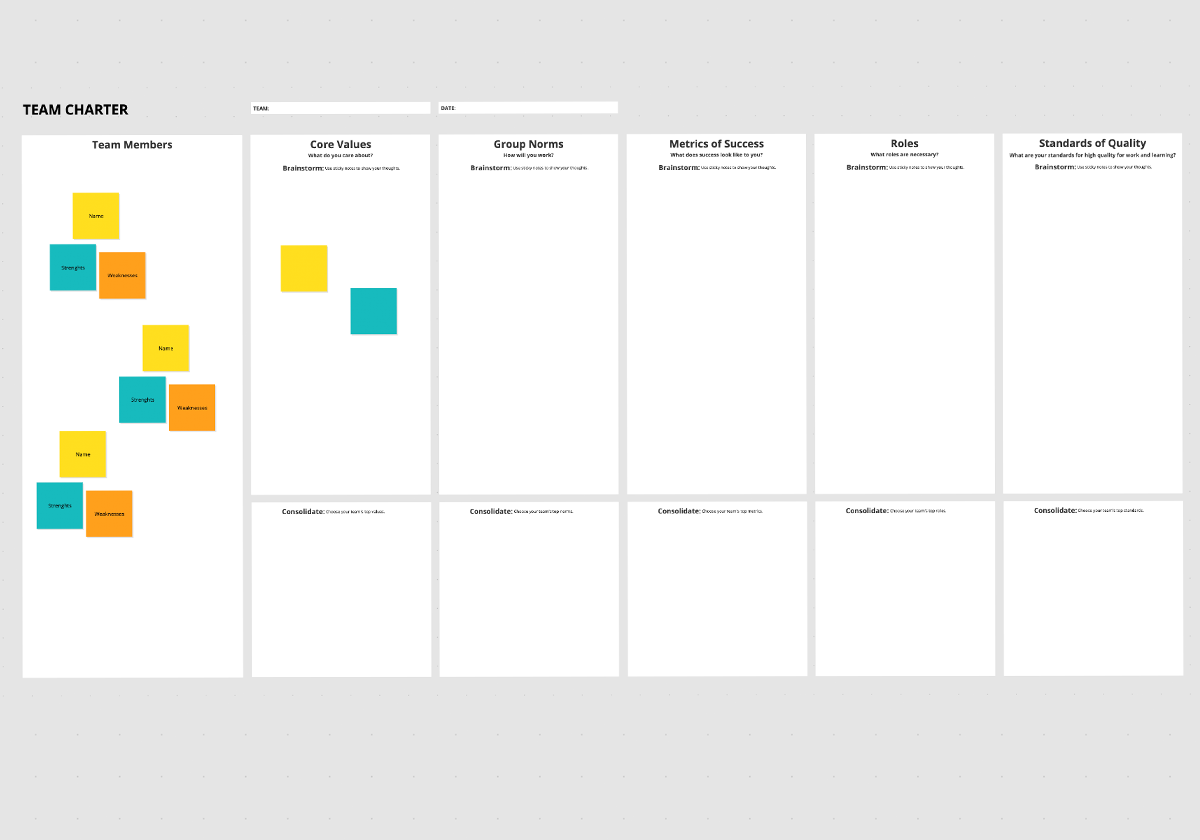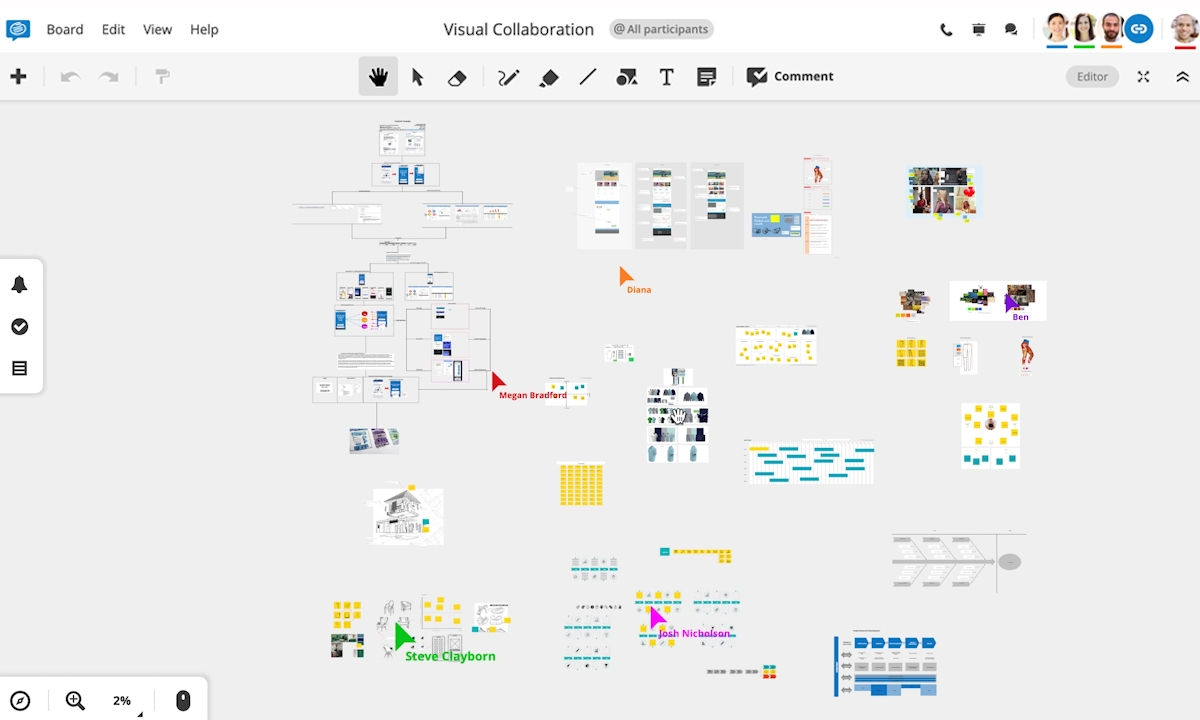How to put big picture thinking into practice with an online whiteboard
In this article, we’re going to focus on how you can embrace big picture thinking in your organization, and how a digital whiteboard can help facilitate that.

What is big picture thinking?
Big picture thinking refers to the way someone looks at problems, opportunities and solutions. The opposite of big picture thinking is detail-oriented.
So why does this matter in business? To have the best chance at success, companies need both big picture thinkers and detail-oriented employees. They need the dreamers, and the doers. The risk takers and the risk averse. Without big picture thinkers, companies wouldn’t progress and innovate, but without detail-oriented employees the day to day tasks wouldn’t get done and the company wouldn’t work.
In this article, we’re going to focus on how you can embrace big picture thinking in your organization, and how a digital whiteboard can help facilitate that.
Discover visual collaboration
Collaborate seamlessly across teams and timezones with Conceptboard’s infinite digital whiteboard
How to put big picture thinking into practice
Big picture thinkers are full of dreams, ideas, and creative solutions to possible problems. These are all valuable skills that businesses should embrace to help them grow and innovate. Here are some ways to embrace big thinking in your organisation.
Brainstorming
If you are running a brainstorming session, you definitely want to ensure you encourage big picture thinking. Brainstorming sessions can be held remotely or co-located using Conceptboard’s digital whiteboard. The limitless board space will give you plenty of room for out-of-the-box thinking. Or, why not give brainwriting a go. The concept is a subtler version of brainstorming, where participants write answers on separate pages, and then pass them around, encouraging other team members to expand on existing ideas. This can be a good way to combine the skills of both big picture thinkers and detail-oriented people, without one dominating the other.
Problem solving
When it comes to solving big problems, most teams struggle with transforming research insights into concrete solutions. Big picture thinking can help businesses overcome this by thinking about the issue as a whole, instead of the individual symptoms of the problem. By adopting a big picture approach, you can encourage out-of-the-box thinking, without focusing on the possible roadblocks.
For example, a hotel business might be looking for ways to improve their occupancy rate. Insights might show that customers are regularly booking during promotional sales, so it might seem like the solution is to lower the price. However if you look at the bigger picture, perhaps the solution is to invest in building partnerships with tour companies, building recognition of the destination as a whole, or spending more time promoting the hotel’s facilities on social media.
The visual nature of a digital whiteboard is useful during problem solving discussions. It works on both sides of the equation: by presenting the problem visually, team members can see the full picture. Then they can use the limitless space and tools available to them to come up with creative solutions. The Venn Diagram template, 5 Why’s template or SWOT analysis template are tried and trued problem solving techniques you can try.
Where distributed work happens
Streamline cross-functional team collaboration for distributed teams with Conceptboard
Design thinking
Design thinking is a process promoted as creative problem solving. It’s about flipping problems on their head and focusing on the human needs behind problems. The five step process encourages team members to step away from the normal way of doing things and look at the bigger picture behind your customers needs and wants to deliver customer centric solutions.
One of the reasons Design Thinking works is because it focuses on a very specific problem statement, but embraces big picture thinking to solve it. Team members involved in design thinking workshops should be from different departments to ensure diversity of ideas. During the ideation phase, the first step is to collect ideas on Conceptboard’s digital whiteboard. After that, you can filter through the ideas based on feasibility, but it’s important to initially welcome in all ideas, no matter how outlandish.
Big Picture Thinking with the Team charter
Consider this story about the three stonecutters.
A man was walking along a lane one day when he saw three men cutting stones. He asked them what they were doing.
The first man responded, “I am cutting a stone.”
The second man responded, “I am shaping a stone to fit in a hole in the wall.”
The third man replied, “I am building a cathedral”.
In large companies, it’s easy for employees to lose sight of the bigger picture as they get bogged down in their day to day tasks. That’s why it’s important to remind teams of the long term goals and visions your company is working towards, and remind everyone of the part they plan in that. A team charter can help you do this. The four key benefits of a team charter are:
- Creating a clear, shared vision
- Developing clear roles and responsibilities
- Improving communications
- Clearly defining milestones and goals
This Team Charter Template and guide will guide you through the steps needed to complete a team charter with your team.

Another useful template to help you build team cohesiveness and big picture thinking is the Team Canvas. By defining team expectations, you’ve taken the first step to creating a strong team with shared goals.
Make sure you check out Conceptboard’s full range of business tools and resources you can access for free on our blog.


